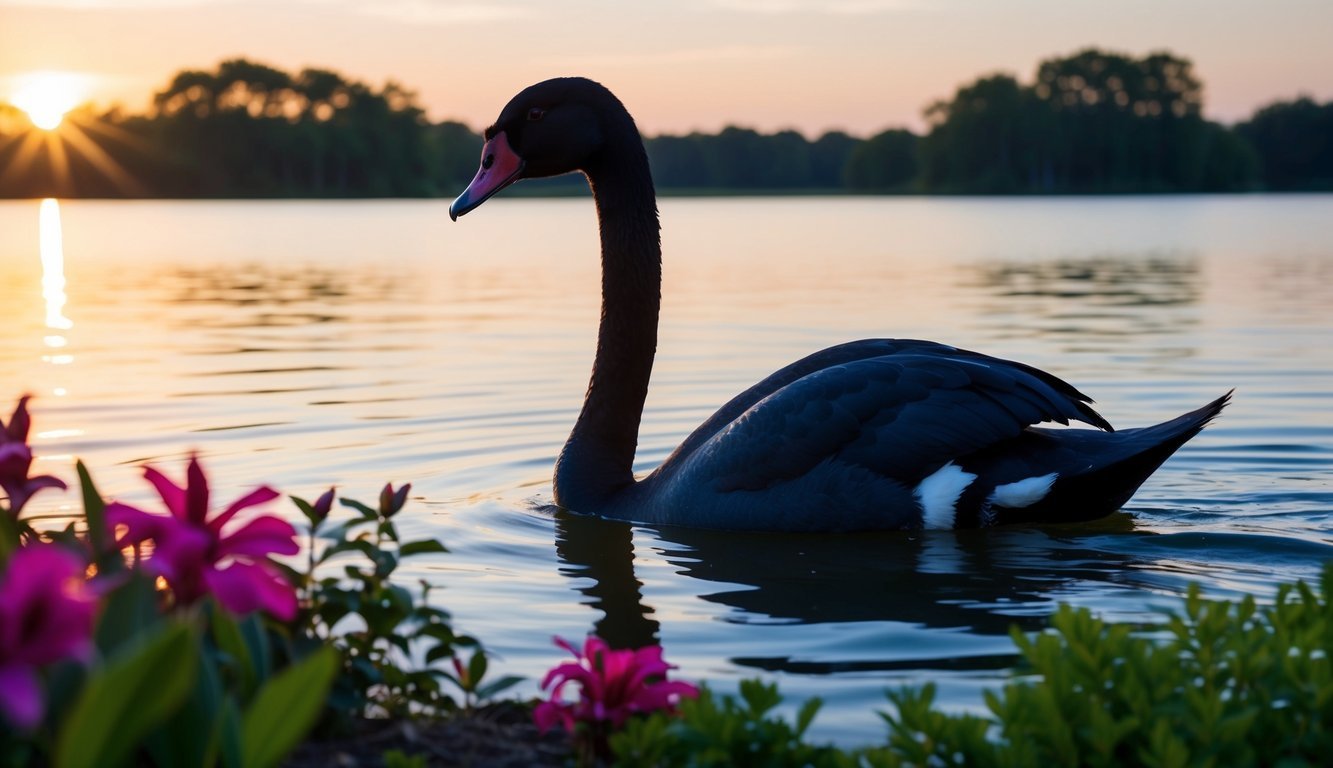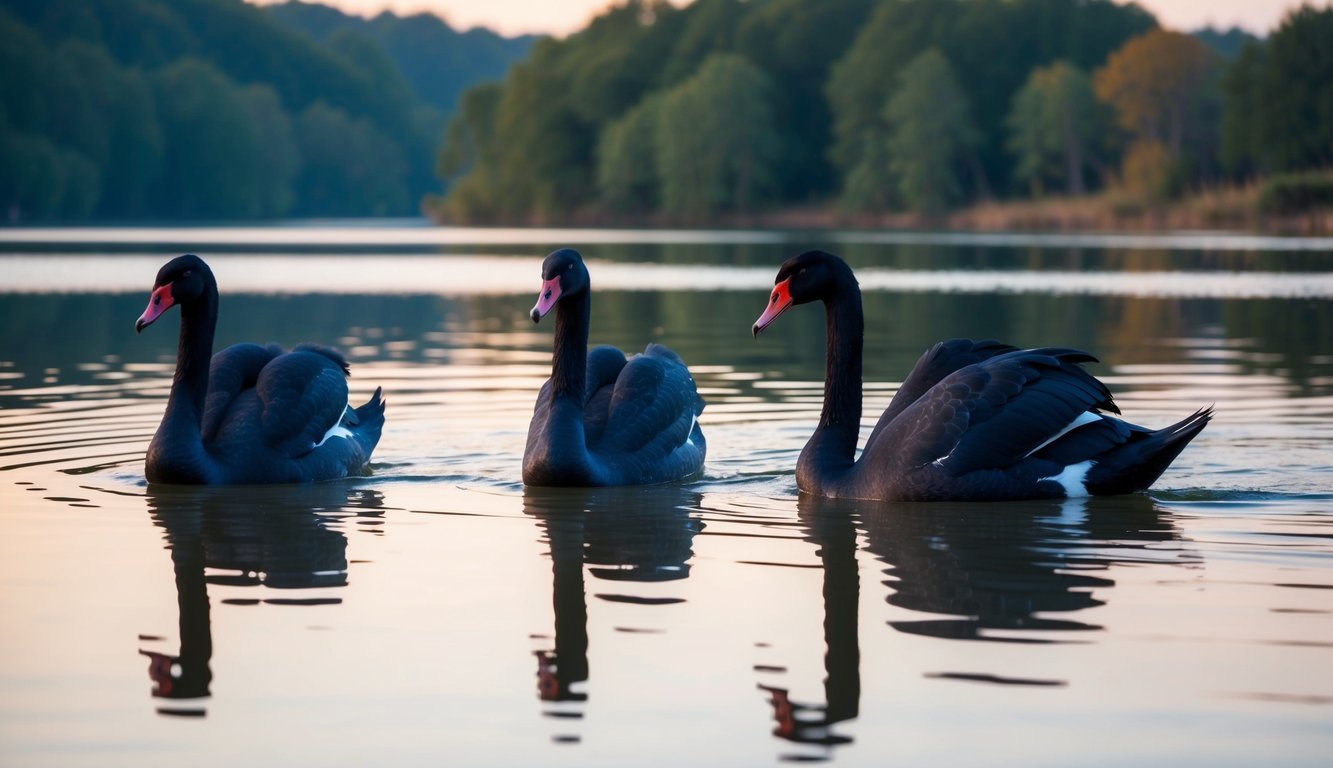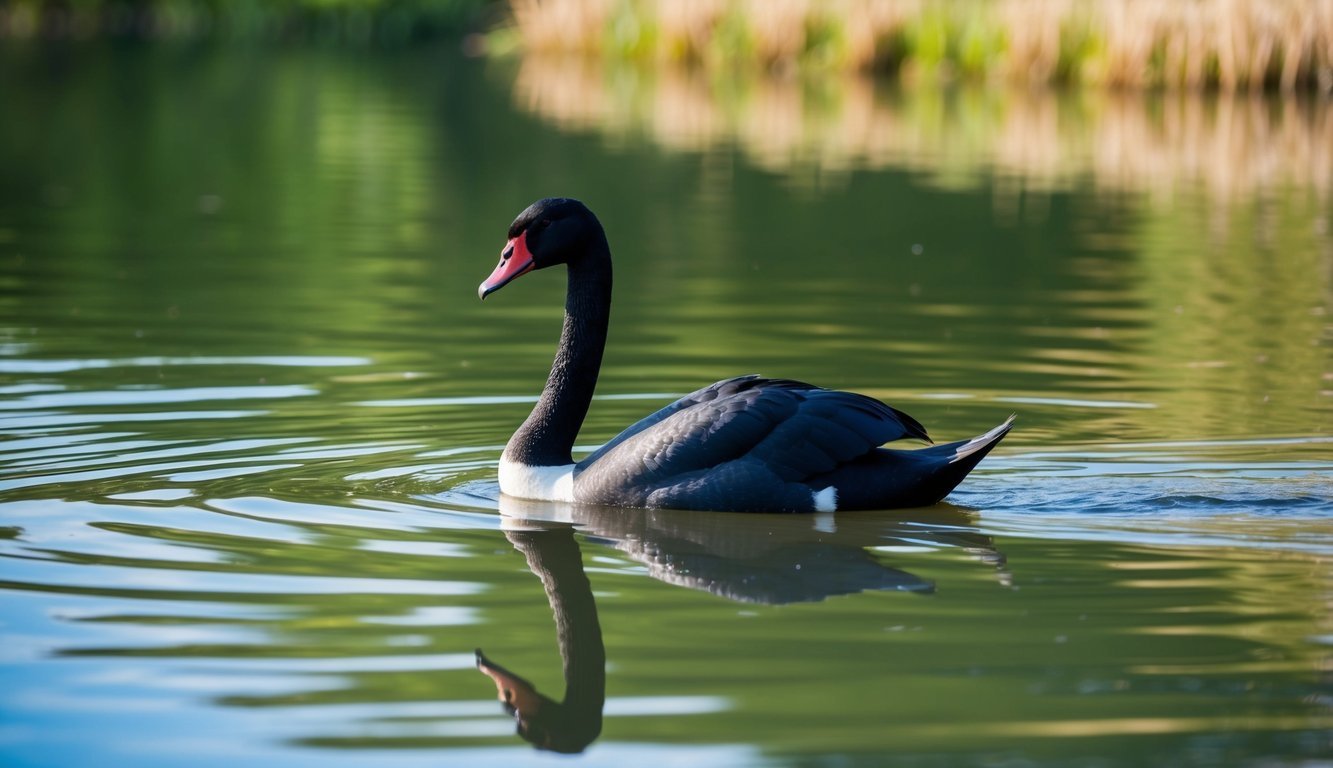PsychNewsDaily Publishers
100 Summit Drive
Burlington, MA, 01803
Telephone: (320) 349-2484
PsychNewsDaily Publishers
100 Summit Drive
Burlington, MA, 01803
Telephone: (320) 349-2484
Black swans symbolize unexpected transformation, duality, and spiritual growth, representing beauty and darkness while serving as powerful motifs in mythology, literature, and art.

Black swans carry powerful symbolic weight across cultures, representing the unexpected and the transformation of our deepest selves. They challenge our perceptions with their rare beauty and darkness, inviting us to explore the shadows where growth often begins.
The black swan stands as nature’s perfect contradiction – a creature that breaks all expectations. I’ve always been fascinated by how these birds represent the duality in our world, existing as the shadow version of their white counterparts. They’re not evil, as some might think, but rather they symbolize the unexpected aspects of life that shake our foundations.
When we see a black swan, we’re witnessing something that challenges what we thought was possible. It’s like looking at the flip side of innocence. The darkness of their feathers reminds me of the parts of our soul we often keep hidden.
In many traditions, black swans represent the surprise elements that change our path completely. I wonder if that’s why they’ve become such powerful symbols in storytelling – they’re literally the embodiment of “plot twist” in nature’s language!
Black swans aren’t just about surprise – they tell us something deeper about personal growth. The journey from white swan to black swan mirrors our own transformations through life’s darkest moments. There’s something beautifull about that process, don’t you think?
In literature and folklore traditions, the black swan often represents a soul changed by experience. We see this in tales where characters dive into metaphorical dark waters and emerge transformed. Honestly, it makes me think about those times when I’ve faced unexpected challenges that completely changed my outlook.
The black swan shows us that change isn’t always gradual – sometimes it’s sudden and complete. Like in Darren Aronofsky’s film Black Swan, where transformation becomes both beautiful and terrifying. The symbol reminds us that our greatest personal growth often comes after periods of darkness.

Swans have captivated our imagination for centuries, swimming through stories and art with their elegant presence. I’ve always been amazed by how these creatures transform from simple birds to powerful symbols carrying deep meanings across different cultures and art forms.
In ancient mythology, swans weren’t just pretty birds – they were powerful symbols with divine connections. One of the most famous myths has to be Zeus transforming into a swan to seduce Leda, creating what we now know as Leda and the Swan – a story that’s inspired countless artists. I’m particularly fascinated by how swans in Greek mythology represent beauty and transformation.
In Finnish mythology, there’s this incredible story about the Swan of Tuonela, which swims in the river of death. It’s actually part of a modernized mythology created around Lemminkäinen’s journey. Honestly, it makes me think about how different cultures view these elegant creatures.
Native American cultures also have swan stories that connect to spiritual transformation. I’ve noticed that across most cultures, swans seem to represent this weird combination of beauty, purity, and sometimes even death.
When it comes to art, nothing says “swan” quite like Tchaikovsky’s ballet Swan Lake. It’s probably the most famous artistic expression of the swan symbolism, where we see this incredible contrast between the white and black swan. The ballet uses symbolic contrasts of black and white to represent opposing forces – something that still resonates in modern interpretations.
In literature and poetry, swans have been constant inspirations. I love how Shelley used swan symbolism in his poetry – there’s something so magical about it. And it’s not just classical stuff! Modern music groups like BTS have referenced swan imagery in their work too.
Visual arts throughout history have portrayed swans in paintings, sculptures, and decorative pieces. We’ve turned these birds into everything from symbols of love to omens of tragedy. What’s amazing to me is how the swan’s elegant form continues to inspire artists today, from classical paintings to modern music videos.

Swans captivate our imagination with their striking presence in natural habitats around the world. I’ve always been fascinated by how these creatures blend power and grace in wild settings.
When I watch swans glide across the water, I’m struck by their almost magical elegance. They move with such grace that it’s hard to believe creatures so large can be so nimble! The way their necks curve in that perfect S-shape as they swim is truly something special.
In Australia, the black swan stands out with its dramatic contrast of shiny black feathers and bright red bill. Honestly, it makes me think about how nature sometimes flips our expectations – most of us picture white swans, but these black beauties are equally stunning.
Their movements aren’t just pretty – they’re purposful. I’ve noticed how they use their wings to create this sorta intimidating display when they feel threatened. Wildlife experts call this behavior “busking,” but I just call it impressive!
Swans aren’t just about looking pretty – they’re one of nature’s best examples of devotion. Many species are socially and sexually monogamous, which is a fancy way of saying they find one partner and stick with them. I wonder if that’s why we humans are so drawn to them as symbols of love?
When two swans face each other with their necks making a heart shape, it’s not just a cute coincidence. This behavior strengthens their bond as a pair. In Western Australia and New Zealand, black swans form these powerful partnerships that often last for years or even their entire lives.
Their loyalty goes beyond just mating. Both parents share nest-building and child-rearing duties. I’ve watched swan couples trade places warming their eggs – it’s like they’re taking turns saying “I got this, you take a break.” There’s something deeply moving about witnessing such commitment in the wild.

Dreams about swans and their floating feathers can reveal deep messages from our inner minds. These elegant birds often appear when our subconscious is trying to communicate important insights about transformation and beauty in our lives.
When I dream of swan feathers floating, I’m always amazed at how meaningful these visions can be. Swan dreams typically connect to our emotional state and hidden desires that we might not recognize when we’re awake. Dream interpreters suggest that swans often foreshadow important life changes.
Black swans in dreams are especially powerful. Honestly, it makes me think about the unexpected changes that might be coming my way. These dark-feathered messagers usually point to rare or surprising events that could transform our path.
I’ve noticed that floating feathers in dreams often represent letting go. When we see them drifting on dream-water, our intuition is probably telling us to release something that no longer serves us.
Sometimes the swan appears as a guide to inner beauty. I wonder if this is why so many people feel drawn to these birds? Their graceful apperance above water, while paddling furiously beneath, reminds us of our own hidden strengths.

Black swans carry rich symbolic meanings across cultures and contexts. They represent unexpected events, spiritual transformation, and duality in various traditions. Let’s explore some common questions about these fascinating creatures and what they symbolize.
In spiritual circles, black swans often represent the unexpected blessings that come from challenging situations. They remind us that what seems negative might actually be transformative.
I’ve noticed that many spiritual traditions see the black swan as a messenger of change and transformation. They’re like cosmic wake-up calls that shake us out of our comfort zones.
The rare appearance of black swans in some regions has contributed to their symbolic nature, making them powerful omens of unusual events or major life shifts.
Black swans are often linked to death, but not always in a scary way. They can symbolize the natural end of cycles and the transformation that follows.
In some traditions, I’ve seen the black swan represent the journey between worlds, kinda like a guide for souls. Their dark color connects them to the unknown and mysterious aspects of existence.
They sometimes appear in dreams during major life transitions, which might explain why we connect them to death and rebirth. It’s less about physical death and more about profound change.
Literature loves black swans! They’re powerful literary symbols that often represent the outsider or the unexpected twist in a story.
In modern writing, the term “black swan” has come to represent unpredictable, rare events with extreme impact. This concept was popularized by Nassim Nicholas Taleb and has influenced how we think about risk and uncertainty.
Writers have used black swans to explore themes of transformation and identity, like in films such as Aronofsky’s Black Swan, where the symbol works on multiple levels.
White swans typically represent purity, grace, and beauty. This is the opposite of black swans in many ways. This contrast creates a powerful symbolic duality.
I find it fascinating how these two symbols create balance. While white swans represent what’s known and expected, black swans represent the unexpected and mysterious parts of life.
In ballet and other art forms, this contrast is often used dramatically to show different sides of human nature or experience.
Swan Lake’s black swan fascinates us because it represents the shadow self. This is the darker, hidden aspect of our personalities that we don’t always want to face.
The ballet requires the dancer to embody both the White and Black swans, which symbolizes the duality within all of us. It’s about the struggle between our different selves.
I think we’re drawn to Odile (the Black Swan) because she represents forbidden freedom and power that’s both frightening and appealing. She’s like the part of us that wants to break free from societal expectations.
The twin flame connection with black swans comes from the idea that these rare birds mate for life, symbolizing an intense soul connection.
In twin flame spirituality, black swans represent the challenging “dark night of the soul” period that many believe happens before twin flames reunite. It’s the difficult transformation that must occur.
People describe how seeing a black swan during separation from their supposed twin flame felt meaningful—like a sign that the unexpected reunion might still happen despite seeming impossible. The rare and unexpected nature of black swans makes them perfect symbols for these intense spiritual connections.